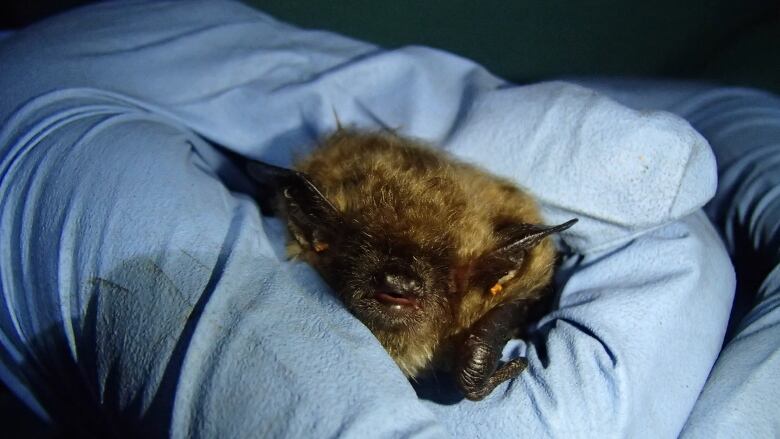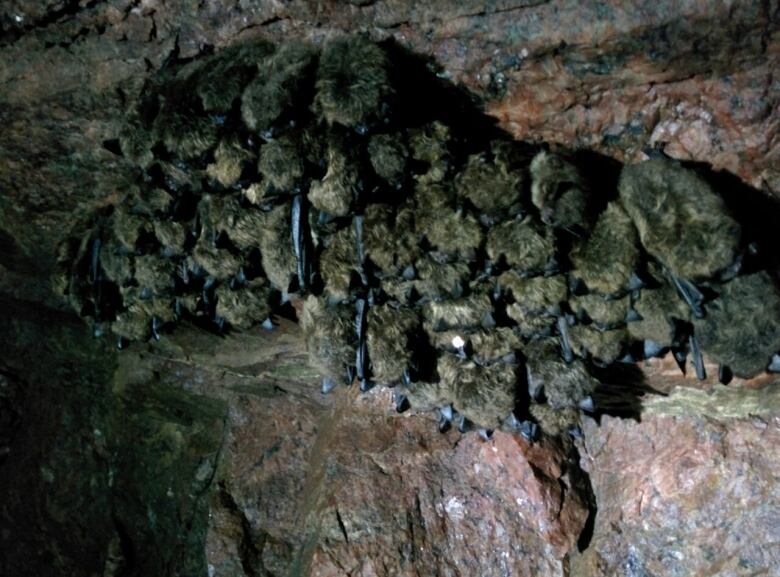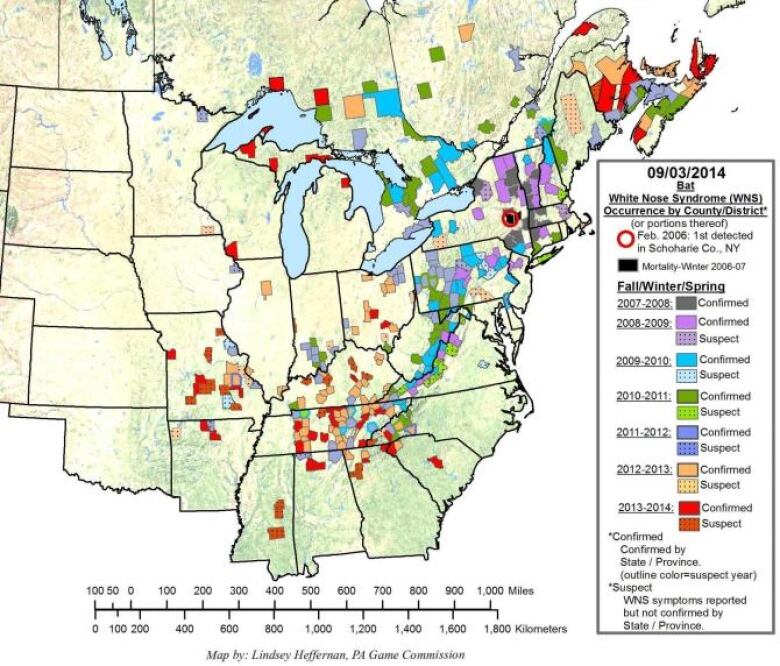Bat researchers track deadly disease across northwestern Ontario
University of Winnipeg Willis Bat Lab researchers studying colonies across Manitoba, northwestern Ontario

Scientists are urging people to help with the effort to track white-nose syndrome,a disease affecting bats in North America.
The disease can cause bats to act strangely, and venture out in winter when they should be hibernating.
At this point, the disease has been found in Northern Minnesota and in Terrace Bay, on the north shore of Lake Superior. And it's on the move.

For those who seea bat out in the open between November and March, Willis encourages them to contact either the Manitoba Bat Blitz,or alocal branch of the Ministry of Natural Resources and Forestry.
White-nose syndrome

Willis PhD Student Mary-Anne Collis said recent research shows that individual bats In Manitoba and northwestern Ontario may fly as much as 500 kilometres from their colonys main habitat in the summer.
It was estimated that the fungus is moving about 300 kilometres a year, said Collis.
Bats are elusive by nature, which is an extra challenge forWillis and other bat researchers. Willis revels in the hunt, and his contagious sense of curiosity with batsseems to have infected Collis, and the rest of the lab.
Theres lots we stilldont know about them, said Willis.

Bats in your home, cabin or in the surrounding area? GiveWillis a call at204-789-1463 or email the lab at mbbatblitz@hotmail.com.












_(720p).jpg)


 OFFICIAL HD MUSIC VIDEO.jpg)
.jpg)



























































































